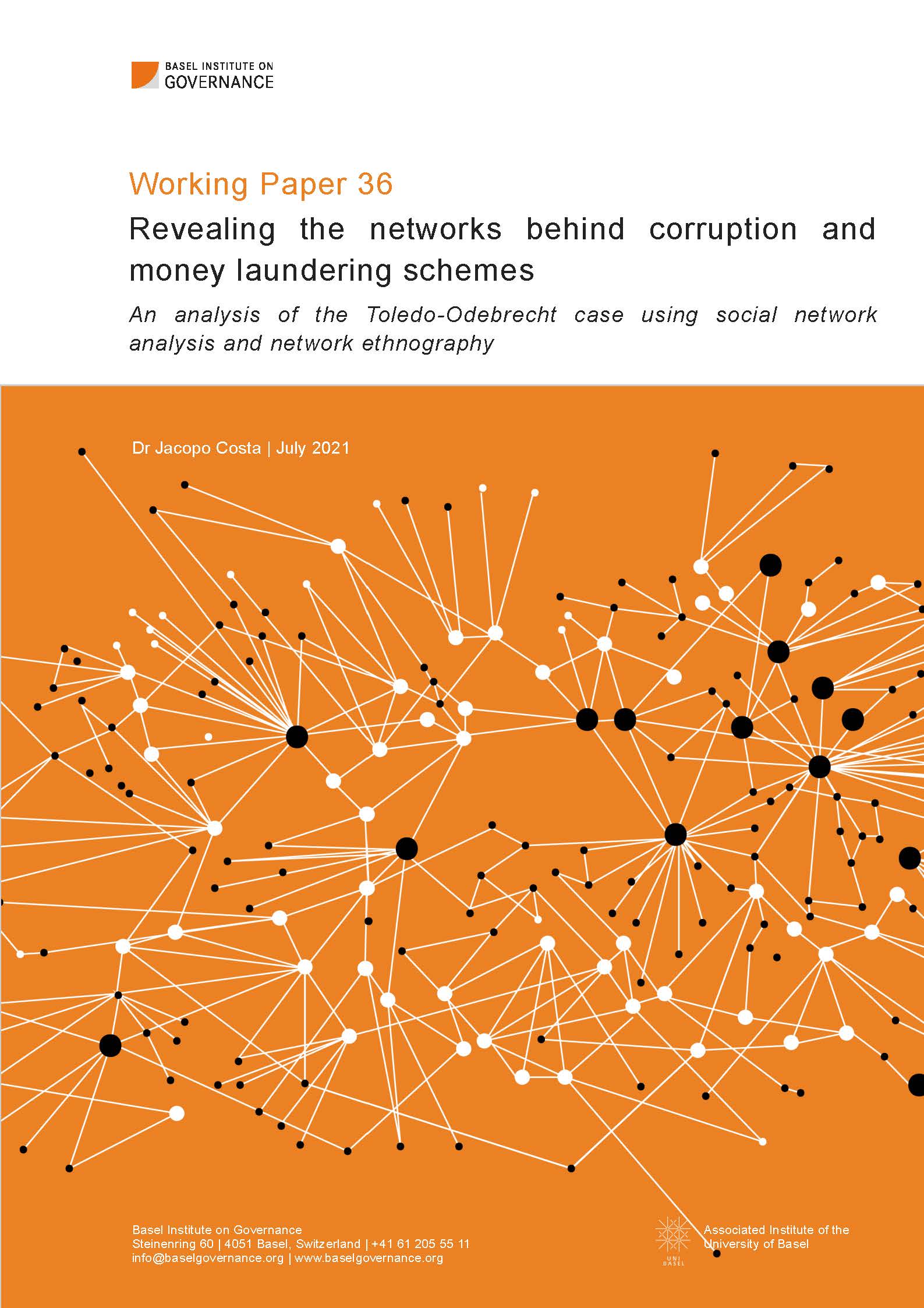Working Paper 36: Revealing the networks behind corruption and money laundering schemes
An analysis of the Toledo–Odebrecht case using social network analysis and network ethnography
Keywords:
Alejandro Toledo, Odebrecht, Lava Jato, social network analysis, network ethnography, grand corruption, money laundering schemes, secrecy jurisdictions, offshore financial centresAbstract
This working paper is based on an empirical investigation of corruption and illicit exchange related to the so-called “Lava Jato” or “Odebrecht” scandal. Focusing on former Peruvian President Alejandro Toledo and his laundering of bribes obtained from the construction giant Odebrecht, the analysis aims to test the usefulness of applying a network lens to better understand the mechanisms underlying grand corruption cases. It also aims to further illuminate the nexus between corruption and money laundering and the role of hidden and offshore financial infrastructures in facilitating the illicit schemes.
The research used a combination of social network analysis and network ethnography techniques to explore the following questions:
- How do money laundering activities and offshore financial infrastructures sustain corruption?
- Who are the key actors involved, how do they interact and what is their division of labour?
- How do actors and clusters govern the social-financial web of relations?
Answering these questions with empirical evidence related to a specific case makes it possible to better understand how the connection between corruption and money laundering using offshore financial infrastructure works. It also supports the emerging understanding of corruption as a collective, transnational and financially advanced phenomenon.

Downloads
Published
How to Cite
Issue
Section
License
Copyright (c) 2021 Basel Institute on Governance Working Papers

This work is licensed under a Creative Commons Attribution-NonCommercial-NoDerivatives 4.0 International License.

